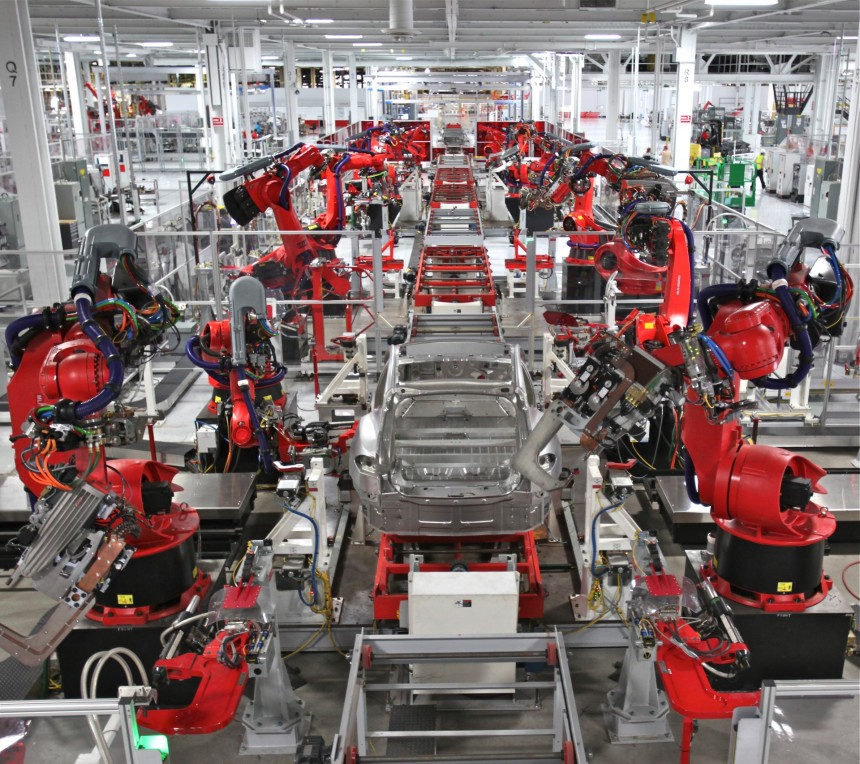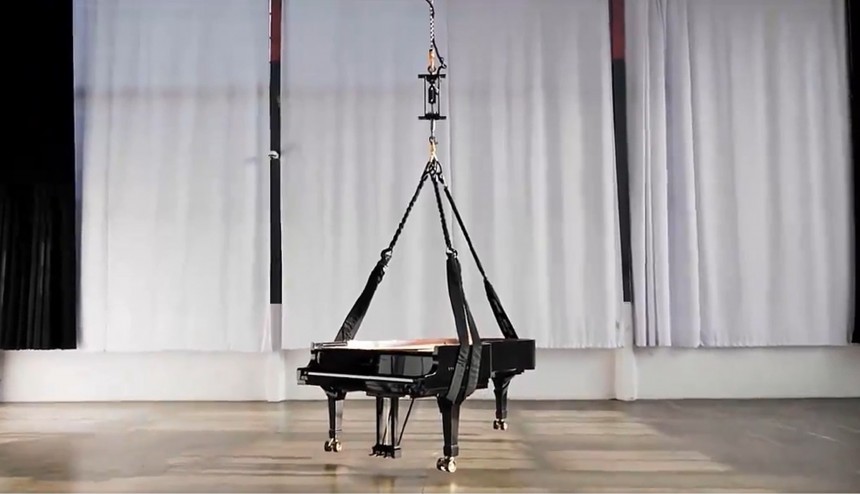What Tesla Optimus Bot Tells Us About the Future of Humanoid Robots
Optimus #Optimus

After watching the Tesla Optimus bot evolve and similar efforts from other companies, it is perhaps time to imagine how the world will change. For better or worse, the robots are here to stay, so dusting off those science-fiction books might not be enough to understand what’s ahead of us.
Although we associate robots with the future, the truth is that humans first imagined mechanical contraptions able to operate on their own using air pressure, steam, and water more than two thousand years ago. The first humanoid robots were built in the 1920s, and science-fiction authors let their imaginations fly from there.
The word “robot” itself was coined by the Czech writer Karel Capek in his play “R.U.R. (Rossum’s Universal Robots),” published in 1920. The word is derived from “robota,” which means work in many Slavic languages. Based on it, Isaac Asimov invented the term “robotics” as a field of study for robots. While science fiction books inflamed the imaginations of generations of teenagers, things went wild with the movie revolution.
Still, the robots had difficulty emerging from science fiction books and movies and into the real world. Even as technology evolved, robots haven’t made much progress. Sure, we have countless highly specialized machines that can do repetitive jobs indefinitely and with utmost precision, but that was not what Asimov and his peers imagined. We want walking, talking, and, most definitely, thinking robots, and this has not yet been achieved.
With the advancements in artificial intelligence, it was only a matter of time before humanity would revisit the old idea of a humanoid robot. I imagine these two fields will evolve in parallel because you can’t imagine an advanced robot without considering artificial intelligence. Otherwise, it’s just a box of metal programmed to do certain things and nothing more. Intelligent robots, on the other hand, are poised to change the world, and this will happen quite fast, enough that most of us will see it in our lifetimes.
Robots: how they appeared and how they evolvedIf we put imagination and science fiction aside, robots might seem like a mundane part of our world. We often hear and use this word, although not to describe mechanical copies of ourselves. Various industries are using them on a large scale to perform particular tasks that humans don’t want or don’t excel at. In the automotive industry, they are part of modern production lines, putting parts together and helping build our vehicles.
Specialized work was among the first use cases for industrial robots, as they can perform repetitive moves with higher precision than humans and without getting tired or distracted. This makes the results more uniform, contributing to what we perceive as build quality. Despite some human-robot clashes that ended tragically for our guys, these robots cannot gain consciousness and only do what they’re programmed to do.

Photo: Tesla
Besides the robotic arms moving things around a factory floor, some robots can move automatically or independently. Probably the most mundane are the vacuum robots, which can map your house and find the best way to clean it thoroughly. Similar robots move supplies in many factories. One common characteristic of all these utilitarian robots is that they function in a controlled environment and perform very specialized tasks.
People have always dreamed of humanoid robots, but we might have to wait longer before hiring or buying a robotic butler. However, modern robots are everywhere, from the military to healthcare to research. Heck, even Musk’s Neuralink uses them to perform implant surgery. And let’s not forget that Musk himself sees Tesla EVs as robots. In fact, intelligent cars and humanoid robots might have a lot in common as Tesla tries to develop them simultaneously.
What prompted Tesla to work on a general-purpose humanoid robot?Tesla only announced joining the humanoid robot race in 2021, but it has moved incredibly fast since then. Less than three years later, the Optimus bot has reached the second generation. Going from a lifeless dummy rolling on a platform during the 2022 AI Day to a full-fledged humanoid robot able to perform complex tasks in 2023 is an impressive achievement.
Although many were initially skeptical about Tesla’s commitment to building a general-purpose humanoid robot, the development pace made them change their minds. Many experts have concluded that Tesla might be ahead of other startups and companies working on similar projects. Still, what prompted Tesla to start this journey, and why it’s pressing “pedal to the metal” with the development?
Musk explained that Optimus could become a very advanced household appliance in a few years. I’m not entirely sold on this perspective. New technologies don’t usually emerge in the kitchen. They typically start in top-secret military labs, reach industrial scale at the world’s top corporations, and become consumer goods only when they exhaust the potential for the former two use cases.
It’s more likely that the Optimus robots will start working for Tesla first before being leased to other corporations and militaries around the world. The same happened to Starlink satellite internet, although Tesla also offered it to private customers to help finance the satellite deployment. There’s another incentive for Tesla to have humanoid robots, though. Elon Musk wants to colonize Mars at some point, and it would be difficult to do it with humans, at least in the early stages. From this point of view, Optimus is the perfect Martian.
The hardware: what makes the Optimus bot tick?When Tesla introduced the (mostly) crippled Optimus robot at the 2022 AI Day, Musk admitted that “there’s still a lot of work to be done to refine Optimus and prove it,” adding, “I think Optimus is going to be incredible in five or 10 years, like mind-blowing.” The way things move, we might see mind-blowing progress sooner than that.
Tesla hasn’t been very communicative about the Optimus bot’s hardware. It’s understandable, considering the fierce competition trying to learn as much as possible from Tesla. Based on the initial specifications, the 5 ft 8 in (173 cm) tall robot would be able to walk fast, at 5 mph (8 kph), and carry up to 45 lbs (20 kg) in its robotic arms. It could also deadlift up to 150 lbs (68 kg), with an arm extend lift capacity of 10 lbs (4.5 kg).

Photo: Tesla
Not too bad for a 160-lb (73 kg) robot, although it has likely improved tremendously since then. The second-generation Optimus features 28 Tesla-designed actuators, which improved its capabilities while shaving off 22 lbs (10 kg). Most of the redesign efforts went into the new hands, which are now capable enough to make Musk confident they’ll be able to “thread a needle” in no time.
While the actuators and the articulated limbs are important for a humanoid robot, its brain is crucial. The Optimus robot relies on the same chips Tesla uses in its electric vehicles for the Autopilot computer. Optimus will also be powered by the same neural networks as the Tesla Full Self-Driving, making them brothers of another mother, so to speak.
The software: artificial intelligence will change everythingAlthough the tasks people expect Optimus to perform differ from those of a Tesla EV, they rely on the same inference computers. Elon Musk has made no secret that FSD’s success is crucial for the Optimus bot’s development. After all, no humanoid robot would be worthy of this name without having “artificial intelligence.” Tesla has taken significant steps to expand its AI footprint and is now promoting itself as an AI/robotics company instead of a carmaker.
As we’ve already seen from last year’s videos shown by Tesla, Optimus can learn from the interaction with humans and the environment. This is not much different from how FSD Beta improves over time after “watching” thousands of hours of driving videos. So far, Optimus’s actions are no more intelligent than FSD avoiding a pedestrian. It does so because they were trained on real-world data to do so, but neither understands the reasoning behind these actions.
This means that neither FSD nor Optimus are intelligent. The real revolution would only start when they begin to reason. Humans could only distinguish themselves from animals when the language allowed them to communicate and pass what they learned to others so that they wouldn’t have to start from zero. For robots, that would also be their homo sapiens moment. People call it artificial general intelligence (AGI), and it’s the moment everyone dreads.
Energy source: are Li-ion batteries enough?Tesla intends to use its 4680 cells to power the Optimus robots, although many have argued that this form factor might not be the most efficient for a humanoid robot. While the robot’s torso is big enough to house 4680 cells, it will likely need a lot of them just to get to the required voltage. Assuming Optimus will use a 48-volt electrical system, it will need about 12 cells connected in series to reach this voltage using NCM chemistry.
Tesla could use a higher voltage to make Optimus more efficient, but the 48 volt is not an arbitrary value. It’s the threshold that makes electricity dangerous to humans, so Tesla would not want anything higher than that. Even at 48 volts, Optimus’s battery pack would need some kind of redundancy in case a few cells go bad. Ideally, It should have several 48-volt modules connected in parallel to increase the power capacity and have redundancy.

Photo: @ConnectingODots via X
Tesla said that Optimus’s battery would have a 2.3-kWh capacity. Given that 4680 cells are estimated to have about 26 Ah, it would need two 48-volt modules connected in parallel to reach the 2.3-kWh capacity. Using 2170 cells (around 5 Ah) would require 10 modules or five times as many cells. That would make the build more flexible and thermal management easier, but it would increase costs. This is why Tesla would probably want to use the bigger cells, especially as it produces them in-house.
Optimus needs to have enough battery for an entire 8-hour shift to be really useful as a work robot on a factory line. Or so people think, without considering that humans also take breaks during their work time. With current fast charging capabilities, the Optimus would not need more than 15-20 minutes of charging sessions to get enough juice for another stint. And you can always have a spare Optimus to fill in a position when necessary.
The good stuff: what problems they’re supposed to solve?The main reason companies develop humanoid robots is not to fulfill some crazy Sci-Fi fantasy. It’s because humanoid characteristics allow them to replace humans in a world built for them. This makes humanoid robots ideal for performing repetitive, tedious, or dangerous tasks. They can also ensure a consistent quality of work, considering they are not affected by fatigue, illness, or just having a bad day.
This is why the robots are painted mostly as problem solvers, addressing labor shortages and other issues. Robots can work regardless of conditions and do the jobs humans tend to avoid. They also drastically increase productivity, incentivizing companies to use more robots instead of humans.

Photo: @CernBasher via X
Robots have multiple advantages over humans, being more dependable, hard-working, and ultimately cheaper. Robots don’t need healthcare, don’t go on strike, don’t need retirement benefits, don’t go on vacation, and are more than happy to work almost continuously, save for the charging breaks. Even for families, robots can help care for the elderly and disabled and provide company and support to lonely people.The bad stuff: what are the dangers?For all the advantages listed above, robots have at least as many downsides. Yes, they can do hard work better than humans and relieve them from many chores. But this means fewer people will be needed to do these jobs, and soon, it will become challenging to find a job. This creates more problems than the robots promise to solve, as it can lead to social unrest.
Elon Musk said at some point that people would not have to work anymore unless they really chose to. Well, they might not be able to work even when they want because no more jobs will be left for them. This raises questions about how humans can stay relevant and live meaningful lives when they’re no longer needed. The robot revolution also requires a new distribution of wealth, considering that most people would find it difficult to earn their living.
As you can see, these are legitimate cases when the robot proliferation spells trouble for the average Joe. I don’t want to discuss more far-fetch scenarios like a robot uprising. There is genuine concern that artificial intelligence could develop into an unstoppable force that could wipe out humanity. If this happens, it will certainly not need humanoid robots to carry out the job. Still, they will make it much easier to fight with us in a conventional way, which is what we learned from books and movies.
Optimus bot: what’s at stake for Tesla?Elon Musk said that the Optimus bot has the potential to become more significant than Tesla’s vehicle business. This is not much different from what he said about Tesla’s Full Self-Driving. The latter is much more critical, considering that the Optimus program also depends on it. This is why Musk was more direct: it could make or break Tesla. Without FSD, Optimus would be a shiny metal toy with no value whatsoever.
Photo: Tesla
Optimus’s potential for Tesla is virtually infinite, not just as a commercial product. Tesla will undoubtedly use Optimus bots on its production lines, in the mineral mines, and potentially every other job that humans now do. There’s really not a thing an intelligent robot would not be able to do, so we will soon see a completely different society, one that we will no longer recognize.
Similar to cars, the robots might not be sold at all if Tesla has its way. The vehicles are more valuable when used as robotaxis operated by Tesla, once it cracks FSD. The robots will also do their job as a service, and there are few incentives for Tesla to sell them. Even if it does, the prices will be prohibitive for all except the biggest corporations.
Elon Musk wants to turn X (formerly known as Twitter) into “the everything app,” so don’t be surprised that he’ll also want Tesla to become the everything company, sort of like the ACME corporation from the Looney Tunes Cartoons. But the final goal is, as Musk often says, to make the human race multi-planetary. Having humanoid robots makes this goal much easier to achieve.